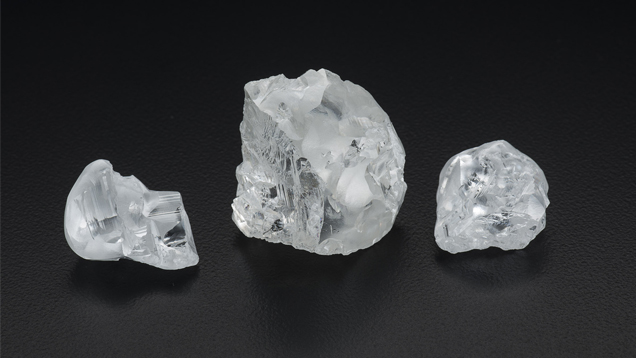GIA New York Science Talks Series: Superdeep Origin of Super-Large Diamonds
Wednesday, October 30, 2019
5:00 p.m.
GIA Education, 8th Floor
50 West 47th Street
New York, NY 10036

Rough diamonds from the Letseng mine, Lesotho, exemplifying large size (14 to 91 carats here), irregular shape and resorbed surfaces. Photo by Robert Weldon/GIA; courtesy of Gem Diamonds Ltd.
Join us as GIA research scientist Evan Smith shares his breakthrough research on remarkably large, high-clarity diamonds and what they reveal about Earth’s geology. He discovered, through examining diamonds with characteristics similar to famous stones such as the Cullinan, Constellation and Koh-i-Noor, that many large, high-clarity diamonds formed in the earth’s deep convecting mantle. These diamonds’ inclusions offer insight into the cycling of rocks, carbon and hydrogen in an area inaccessible to science. According to Smith, “diamonds are some of the most scientifically valuable samples of our earth.” Come discover why.
The event is free and open to the public. Seating is limited. Registration is required (register below). Wine will be served. Doors open at 4:30 p.m.
Smith, an expert in diamond geology, joined GIA in 2015 as part of the Richard T. Liddicoat Postdoctoral Research Associate Fellowship program. His work centers around diamond inclusions and what they reveal about the evolution of the earth. He was the lead author for an August 2018 article in Nature magazine on blue diamond formation in subducted oceanic plates and a December 2016 article in Science magazine on the origin of exceptionally large, high-clarity diamonds. He holds a Ph.D. in geology from the University of British Columbia as well as a Bachelor of Applied Science and Master of Engineering from Queen’s University in Kingston, Ontario.
.jpg)


